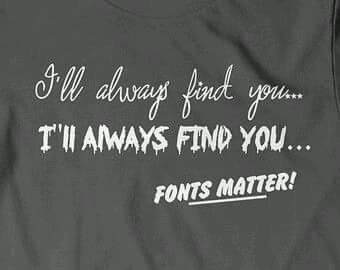I recently watched a double feature of
Village of the Damned (1960) and
Children of the Damned (1964). I was completely fascinated by the
contrast between the two films. Even though the latter is ostensibly a sequel, instead of continuity, the two movies feel like mirror images on every level, thematically and stylistically.
Although released in 1960,
Village of the Damned is at heart a 1950s film. It�s just at the tail end of that era of science fiction filmmaking. This carried over into the movie�s title in the credits: a serif typeface, in quote marks. Playing against an ivy covered wall just accentuates the pastoral feel.
Now look at the contrast in the title of
Children of the Damned. I don�t think it�s Helvetica, but it�s something in that family: a �scrape away the crap� grotesque sans serif. The title appears over an urban setting. You just couldn�t imagine that title card on a film from the 1950s.
Children of the Damned is absolutely a film of the 1960s.
In just a few short years,
everything had changed graphically.
I could go on about the differences between the films, but this is a design blog, not the movie review blog. But it got me wondering: does your poster look like it�s in the right decade?
As it happens, this is the twentieth anniversary of Windows 95. Windows 95
wasn�t the first PC operating system to have TrueType fonts, but it broke a lot of ground for digital typography for the average user. The
font list for Windows 95 included Arial, Times New Roman, Courier, and (shudder) Comic Sans.
Many posters have not moved past those font choices from
twenty years ago. Lots of posters are set in Arial, Times New Roman, and sometimes even (shudder) Comic Sans.
Admittedly, some typefaces have staying power. Decades-old Futura appeared on a
list of most popular web fonts last year. Nevertheless, typography has moved on. Styles have changed.
If I were to try to pinpoint some of the trends I see in type:
Thin is in. Designers are using a lot of lighter lines for fonts. I think this is related to the development of very high resolution screens (300 dots per inch, in some cases). Fine lines can hold up very well on high resolution screens. I don�t think it�s an accident that Calibri Light got added to the roster of default Windows fonts a while back.
Flat design. Again related to the propensity to design things that look good on small but very high resolution screens,
simple, geometric typefaces are seeing a lot of use now. Nine of the ten fonts on this
list of popular web fonts fit that description. Here�s a
list of examples. It�s instructive to look at what Google images throws up, too. It�s a very distinct aesthetic.
Angular momentum. This one is hard for me to describe, because I�m not a trained type expert. But I�ve noted that when you look down at the detailing, many modern serifs have some angled lines, rather than smooth curves. Here�s a new font,
PF Occula, that shows some of this:
Does your poster look like a product of the twentieth-first century... or the twentieth?



































